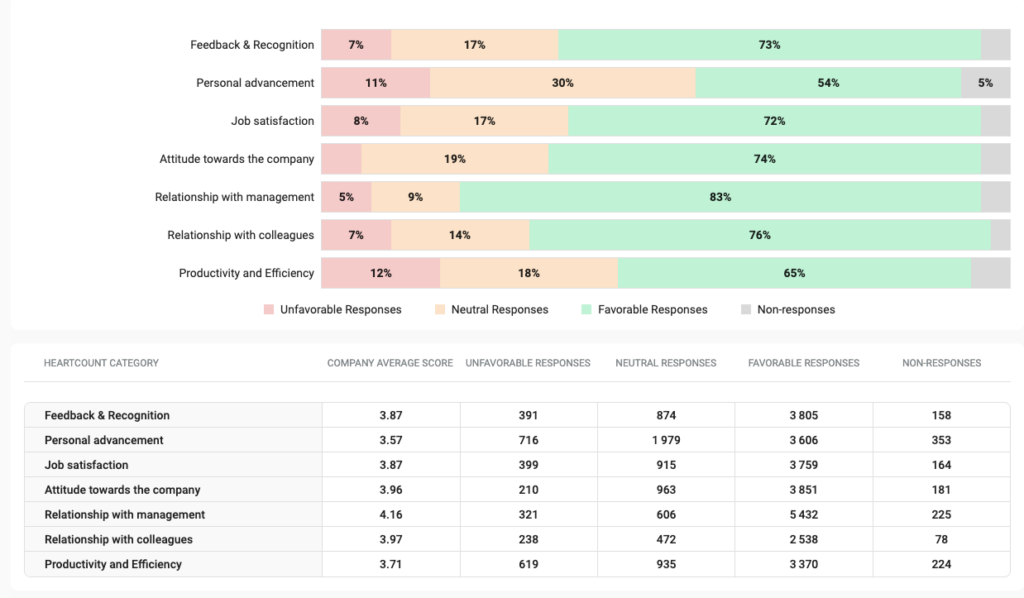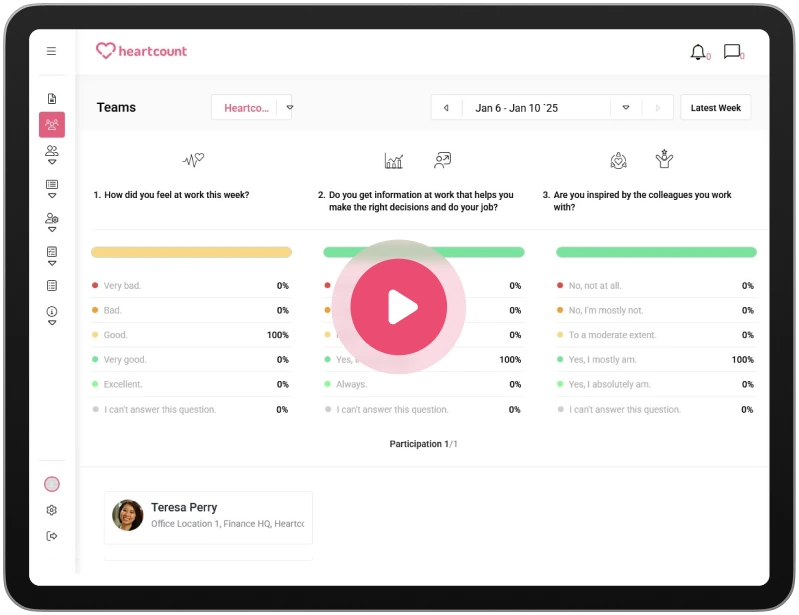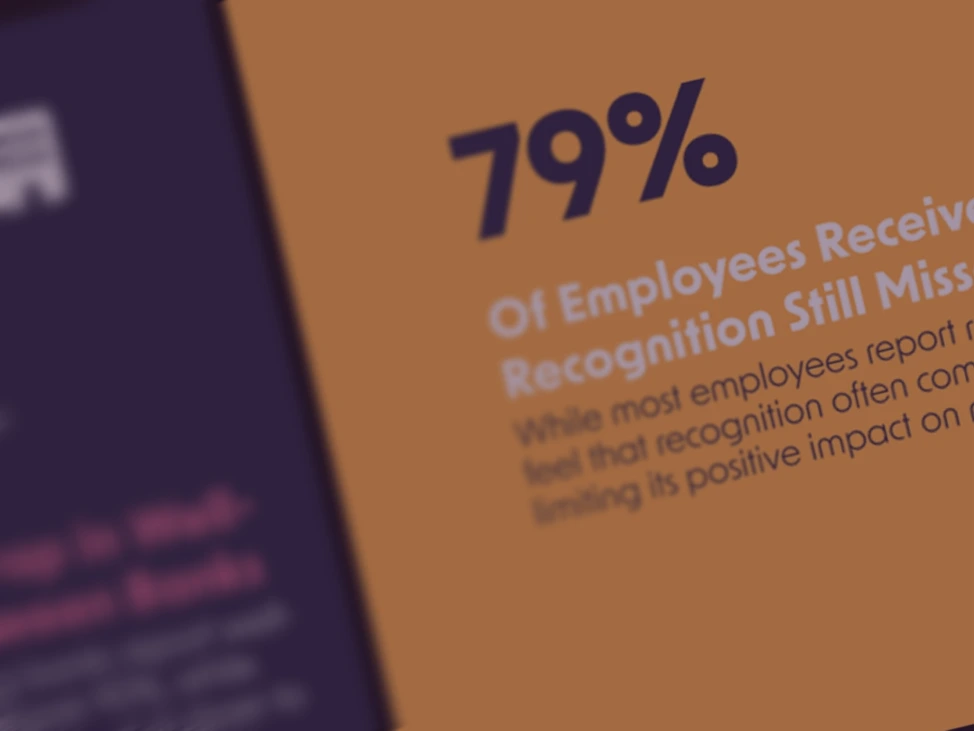Strategic human capital management: Way to align your workforce and your goals

HR sectors face a growing number of challenges in managing their workforce. High employee turnover, finding and keeping top talent, and ensuring employees stay engaged — just to name a few of the common struggles.
Strategic human capital management (SHCM) helps businesses address these issues by aligning HR practices with the company’s long-term goals. By focusing on employee development, engagement, and retention, SHCM helps reduce turnover, saves costs, and ensures that the workforce is ready to support future business growth.
HR sectors face a growing number of challenges in managing their workforce. High employee turnover, finding and keeping top talent, and ensuring employees stay engaged — just to name a few of the common struggles.
Strategic human capital management (SHCM) helps businesses address these issues by aligning HR practices with the company’s long-term goals. By focusing on employee development, engagement, and retention, SHCM helps reduce turnover, saves costs, and ensures that the workforce is ready to support future business growth.
What is strategic human capital management?
Strategic human capital management is an approach that connects employee management with a company’s long-term goals.
Instead of focusing only on basic HR tasks like hiring or payroll, SHCM aims to align human resources with overall business strategy. Employees are viewed as valuable assets, often called “human capital,” because their skills, knowledge, and performance directly impact the company’s success.
Through strategic human capital management, companies recruit talent, develop employee skills, and work to retain top performers. This approach helps organizations grow and remain competitive by making the most of their workforce.
In short, SHCM helps businesses achieve their goals by investing in people.
The role of human capital management in the company
Human capital management (HCM) helps companies meet their business goals.
How? By focusing on recruiting, training, and retaining employees, human resource management aligns the workforce with the company’s strategic objectives. With the right people in the right roles, businesses can more easily reach their targets.
Strong strategic HR practices also shape company culture. For example, by promoting workplace transparency and employee engagement, companies can create a positive work environment that keeps employees motivated and productive. A healthy company culture helps keep talents and improves overall performance.
By emphasizing human capital, businesses can gain a competitive edge. Well-trained and engaged employees perform better, which improves the company’s ability to stay ahead in the market. Companies that invest in their people are more likely to succeed in the long run.
The difference between traditional human capital management and strategic human capital management
There are clear differences between traditional human capital management (HCM) and strategic human capital management (SHCM). While both involve managing employees, the approaches and impacts vary.
Traditional HCM focuses on day-to-day HR tasks, like hiring, payroll, and benefits management. It’s more about making sure things run smoothly in the short term.
Strategic HCM looks at the bigger picture. It aligns HR activities with long-term business goals, focusing on developing and engaging employees to drive company growth.
The following table breaks down the main differences:
| Traditional HCM | Strategic HCM |
| Focuses on daily HR tasks (hiring, payroll) | Aligns HR with long-term business strategy |
| Reactive approach (fixes issues as they come) | Proactive approach (plans for future growth) |
| Prioritizes administrative tasks | Prioritizes employee development and retention |
| Short-term focus | Long-term focus |
| Little to no focus on company culture | Actively shapes company culture |
Key components of strategic human capital management
Strategic human capital management involves several important components that work together to recruit, develop, and retain top talent, as well as create a stronger and more competitive organization.
Talent acquisition and recruitment
Talent acquisition is more than just filling open positions. Recruiters and HR representatives must find the right people who fit the company’s culture and long-term goals. Strategic recruitment helps companies remain competitive by bringing in talent that fits the company’s current and future needs.
Strategic talent acquisition:
- Builds an employer brand that attracts top talent by promoting company culture, values, and growth opportunities
- Helps proactive recruitment that anticipates future talent needs rather than waiting for a vacancy
- Uses data-driven methods to identify where the best candidates are and what they’re looking for
Employee development and training
Once the right people are hired, it’s important to invest in their growth.
Investing in employee development means offering training that helps workers improve their existing skills and learn new ones. When employees have the chance to grow, they feel more valued and motivated to stay with the company.
Development initiatives also improve the employee experience, which makes the workplace more engaging and rewarding for everyone.
Strategic human capital management ensures:
- Ongoing training opportunities that involve both technical skills training and leadership development
- Customized learning paths that meet individual career aspirations while aligning with organizational needs
- Preparing high-potential employees for leadership roles through mentorship programs, workshops, and cross-functional training
Performance management and evaluation
Performance management ensures that employees know what’s expected of them and get regular feedback on how they’re doing. Companies use data to measure performance and identify where employees are excelling and where they need support.
Clear feedback builds workplace transparency, as it makes sure that everyone knows how they are contributing to the company’s success. Employees who understand their progress are more likely to stay engaged and perform better.
Key aspects of performance management and evaluation include:
- Continuous, constructive feedback that fosters improvement and helps employees stay aligned with the company’s goals
- Setting clear, measurable goals that are directly tied to broader business objectives
- Using performance data and analytics to identify strengths, areas for improvement, and potential leadership candidates.
By integrating these strategies, performance management becomes a tool for growth rather than just an evaluation process, and it motivates employees to contribute more effectively to the company’s success.
Companies can use employee experience platforms like HeartCount to collect employee feedback. In addition to regular weekly or bi-weekly surveys, you can create custom surveys, track peer recognition, and gather direct employee feedback. The semiannual report helps you take a closer look at these relationships and workplace trends.

Succession planning
Succession planning helps companies prepare for the future by training employees to take on leadership roles. If and when key leaders leave, the company already has someone ready to step in. By preparing employees for higher-level roles, companies secure their future and maintain stability during inevitable transitions.
Internal development reduces the risk of leadership gaps, and having a clear plan builds trust with employees. Also, people are more likely to stay with a company if they see a clear path for their growth.
With succession planning, companies can
- Identify future leaders early and invest in their development
- Organize cross-functional training to give potential leaders a comprehensive understanding of the company
- Build a talent pipeline to ensure leadership continuity during times of transition
Employee engagement and retention
Keeping employees engaged is important for reducing turnover.
Employee engagement means that workers feel connected to the company and are motivated to do their best. Engaged employees are more productive and less likely to leave, which saves the company time and money.
Companies can use HR tools, like the above-mentioned HeartCount, to collect feedback and measure and improve engagement and retention. High engagement helps businesses keep their top talent for the long run.
By prioritizing employee engagement and retention through SHCM, companies can
- Create a positive work environment where employees feel valued and supported
- Provide meaningful recognition and rewards and motivate employees to perform at their best.
- Adjust their strategies to meet employee needs

Benefits of strategic human capital management
SHCM offers many benefits to companies by aligning their people strategies with business goals. These benefits go beyond just keeping operations running—they help businesses grow, save money, and improve employee satisfaction.
Reduced turnover
Reducing turnover means fewer people leaving the company, which saves money and keeps teams stable. SHCM helps by keeping employees engaged and satisfied.
For example, Netflix reduces employee turnover by encouraging growth and open feedback. It uses regular reviews to help employees improve, focusing on development instead of just yearly evaluations. An open and supportive culture, along with career growth opportunities, keeps employees engaged and loyal.
Lower turnover also helps teams stay strong and keeps productivity high because experienced employees stay longer and continue contributing to company success.
Cost savings
Hiring new employees is expensive; there are costs for recruiting, training, and onboarding. SHCM helps reduce costs by focusing on employee retention and decreasing expenses. Keeping employees for the long term also boosts engagement, which has a direct impact on employee engagement ROI (Return on Investment).
Google reduces costs and improves retention by prioritizing employee development, which helps build a workplace that employees don’t want to leave. Rather than constantly hiring externally, Google invests heavily in its current workforce; it offers extensive career growth opportunities and training programs. This approach, which includes peer-led initiatives like G2G (Googler-to-Googler), allows employees to learn from each other, increasing engagement and reducing turnover. By investing in their own people, Google saves on recruitment and onboarding costs while nurturing a loyal and highly skilled workforce.
HR technology like automated payroll or performance tracking also cuts costs by saving time and reducing errors. HR teams can focus on bigger projects instead of manual tasks, which saves the company money in the long run.
Improved employee satisfaction
When employees are happy, they do better work and stay with the company longer. SHCM focuses on creating a work environment that keeps employees satisfied.
Zappos is well-known for its success through a focus on employee happiness, which drives engagement and performance. The company fosters a fun, inclusive culture with activities like themed office spaces, talent shows, and wellness programs, helping employees feel connected and valued. Zappos also prioritizes training and development, offering a comprehensive onboarding process and continuous learning opportunities. These practices create high job satisfaction, reduce turnover, and improve overall performance.
Satisfied employees are also more likely to speak positively about the company, which can help attract new talent and improve overall company culture.
Better decision-making through data-driven insights
Using data to make decisions is another major benefit of SHCM. Data helps HR teams track employee performance, engagement, and turnover.
For example, if data shows that employees in a specific department are unhappy or leaving more often, HR can investigate why and take action. By using real data, companies can fix problems before they get worse and more effectively plan for the future.
IBM uses HR analytics to understand why employees leave and which roles perform the best. By analyzing employee turnover and performance data, the company can make smarter hiring, training, and retention decisions. For example, IBM’s AI-powered tools predict when employees are likely to quit with up to 95% accuracy, allowing them to intervene proactively and save costs related to attrition. This approach has saved IBM around $300 million. Additionally, HR analytics help the company identify trends in employee engagement, assess the effectiveness of retention initiatives, and optimize talent management strategies.
The role of HR technology in strategic human capital management
Modern HR technology supports SHCM by automating HR tasks, providing better data insights, and improving how companies manage talent. This way, businesses work more efficiently and make smarter decisions about their employees.
Automating processes
HR technology automates routine tasks. For example, payroll, vacation day tracking, and employee benefits management can be automated using HR software.
For example, instead of manually entering data for each employee’s time off, HR software can track this automatically, saving time and reducing the chances of making mistakes. At the same time, HR teams focus on bigger goals like employee engagement and development.
Providing advanced analytics
HR technology also offers advanced analytics that helps companies understand their workforce better. Data can show trends in employee performance, engagement, and turnover. For example, if a company notices through data that one department has a high turnover rate, it can look deeper to find out why.
By using data-driven insights, businesses can identify problems early and fix them before they grow. This also helps companies plan better for the future by spotting trends in workforce needs.
Improving talent management
Another key area in which HR technology helps is managing talent. With recruitment platforms and performance management software, companies can find and keep the right people for the job.
Recruitment platforms help find the best candidates faster by sorting through applications and matching them with the right roles. Performance management tools let companies track how well employees are doing, making it easier to reward high performers or offer additional training where needed.
Enhancing efficiency and decision-making
HR technology improves efficiency by automating tasks and using data to make better decisions. For example, you can use employee experience platforms like HeartCount to see real-time data on employee satisfaction.
If detected, you can quickly address any issues before they lead to lower productivity or higher turnover. With all employee data in one place, HR teams can make faster and more accurate decisions that support business goals.
Ready to build a stronger workforce?
Strategic human capital management improves decision-making, reduces costs, and ensures that employees are engaged and supported in their growth by aligning HR practices with business goals. Investing in SHCM helps companies build a skilled and motivated workforce that is prepared for future success.
The earlier you implement strategic human capital management, the sooner you’ll experience its benefits:
- Improved employee engagement
- Increased productivity
- Reduced turnover
- Alignment between your HR strategy and your business goals
- Motivated workforce prepared for the future
Start your free trial to see how HeartCount can help your organization succeed.







